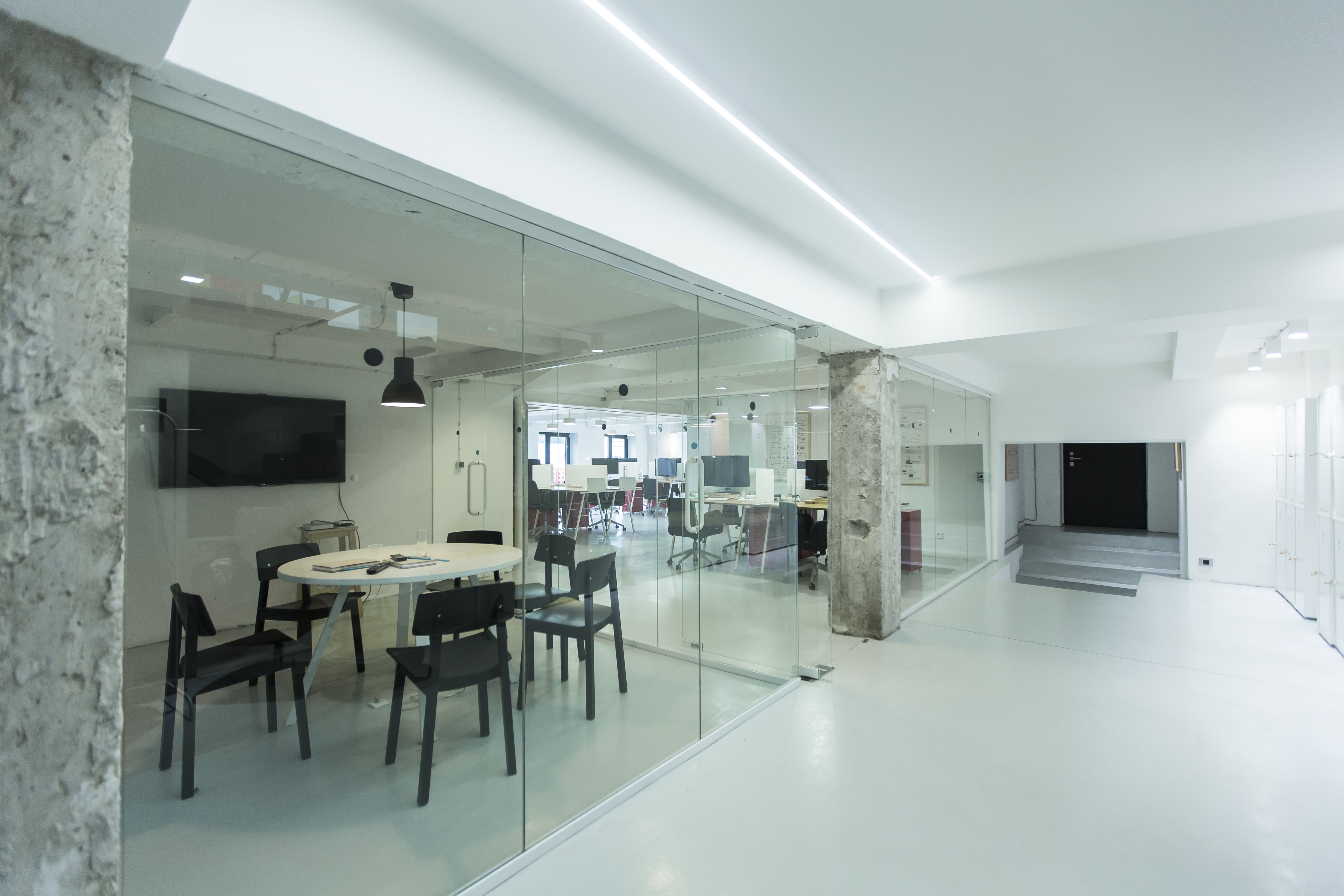The COVID-19 pandemic severely impacted every sector, and its consequences still reflect in the market even after three years. During the pandemic, everything but essential services came to an abrupt halt.
This turn of events impacted commercial real estate, companies and office buildings the most. Offices that previously bustled with daily activity were now empty. Nevertheless, many companies got back on their feet by adopting a remote working policy.
Now that the pandemic is over and things are moving towards normal, there is an increase in the number of offices offering their employees a remote working option or adopting a hybrid model. With companies opting for alternate working models and not feeling the need to build a physical office presence, it is essential to reimagine the workplace culture in this post-pandemic era.
Here are some trends we have observed in the Los Angeles commercial real estate market over the last few years.

Decrease in Preference For Offices and Commercial Spaces in Los Angeles
According to a recent study by Steelcase, only 23% of organizations expect employees to work at the office. 72% take a hybrid approach, and just 5% still allow workers to work remotely.
Business leaders and stakeholders from L.A. have also expressed their opinion that hybrid work is here to stay for the long run. Kian Gohar, CEO of Geolab, also said, "the pandemic made us reassess all our assumptions about how we live, work, socialize and learn."
However, some areas of the Los Angeles commercial real estate market are still reeling from the shock of the pandemic. Some neighborhoods and creative hubs have markets that bounce back faster than other regions.
Companies started adjusting to their new normal and quickly performed better in limited spaces, with employees working remotely. Even though some companies prefer office spaces, the demand may not be able to match the pre-pandemic numbers anytime soon.
Reasons for Lower Demand For Office Spaces
At the end of 2022, experts observed that the demand for office spaces sunk significantly lower than its pace before the pandemic. According to the VTS Office Demand Index (VODI) analysis, the demand is below half of its average pre-pandemic space. The national VODI fell by 6 VODI points, or 11.5 percent, from 52 in July to 46 in August, its lowest level since February 2021.
The current year 2023, will be monumental in predicting the post-pandemic direction of the commercial office space industry. Even though the demand for such spaces is low, the market in Southern California is still recovering at a healthy pace. As many companies are still trying to figure out the best mode of operation for their employees, it also introduces the need to reimagine office spaces.
Reimagining The Los Angeles Workplace
 Los Angeles was a hub of commercial spaces and offices, many of which were severely impacted due to the irreversible shifts caused by the pandemic. While many companies encourage hybrid policies and opening offices, it requires significantly less space than the pre-pandemic culture. Offices are also using alternate methods like coworking spaces to provide a hybrid workspace for their employees.
Los Angeles was a hub of commercial spaces and offices, many of which were severely impacted due to the irreversible shifts caused by the pandemic. While many companies encourage hybrid policies and opening offices, it requires significantly less space than the pre-pandemic culture. Offices are also using alternate methods like coworking spaces to provide a hybrid workspace for their employees.
The current vacancy rate for the office space market in Los Angeles County is 25%, Downtown Los Angeles is 18%, Downtown Long Beach is 26%, and Suburban Long Beach is 34%. According to local trends, the office sector still shows hope of thriving due to the ongoing demand for office buildings, rent growth and return of sales volumes to pre-pandemic levels.
The vacancy rates for these spaces are also reducing and recovering steadily. Additionally, the hybrid work model introduced in companies ensures that every company has a dedicated space for the employees to work at.
This has led to
Unparalleled Popularity of The Hybrid Working Model
Post-pandemic, employees have shown open distaste for going to work full-time. Alexander Snyder, Portfolio Manager at CenterSquare Investment Manager, said, "It's not that the employees don't want to work; they like working from many different places.
The most sought-after office space these days is very flexible, with lots of meeting space and places to gather because, in a hybrid world, the most important thing you can do in an office isn't on a keyboard; it's simply to be present with other humans to build culture, learn and forge relationships."
He also stated that even though hybrid working models are becoming popular, workspaces with outdoor spaces, interactive areas, and cozy interiors are popular among new employees. According to RSM's Middle Market Business Index published in 2022, 68% of respondents employing a hybrid model said they have plans to retain a permanent workspace.
End of The Campus Culture
Tech companies around the world are primarily known for their fabulous campus culture. Many corporations, not just in Los Angeles, are filled with modernist architecture and trendy designs to draw candidates.
While many prefer to work in a futuristic structure, most employees are now looking for remote positions. If the company's employees can complete most of the work from home, is there any requirement for an excessive campus?
The most prominent example is the renowned company Pinterest, which pulled out of a deal to move into a San Francisco office. In this 2020 incident, the company paid $89.5 million to terminate the lease, citing the covid pandemic and shift to work-from-home culture as the reason.
Many tech companies were the first to be vocal about adopting permanent remote work. Companies like Twitter and Facebook announced their decision to allow their staff to work remotely as soon as the pandemic hit. Other platforms like Google and Shopify followed suit, with their CEO Tobi Lutke announcing the company's decision to remote work through Twitter. His tweet said, "Office centricity is over."
Increasing Affinity Towards Coworking
Instead of purchasing private office spaces, many professionals are choosing to work in coworking spaces. Many freelancers and startup teams work from a shared space alongside strangers. As many companies are letting go of their private office space, there is an increasing scope for coworking. According to Raise Commercial Real Estate, L.A. 's four of the top five coworking providers have given back around 1 million square feet of space in the market since 2020.
Speaking about the rising demand for coworking in LA, John Eicher, a principal at Avison Young Inc., said, "I don't believe there has been any material shift post-Covid away from leasing and to coworking. However, in the early parts of the pandemic in 2020, especially the first six months, many companies canceled traditional long-term leases and put them on hold or went into coworking temporarily. But since that has happened, companies have decided 'we're going to a virtual model' or recommitted themselves to a smaller footprint."
According to Chris Fezli, global head of public affairs at WeWork, Los Angeles is the home base for many companies. They can utilize the city's new options for a workplace to expand, optimize and refine the work culture and appeal to today's tenants.
Reduced Affordability of Office Spaces
Office spaces all over the United States have become increasingly expensive due to external issues and market volatility. A high-interest rate and the current inflation have further ensured that office spaces become accessible only to large organizations whose businesses bring in a specific revenue.
In October 2022, the U.S. inflation rate was 7.75%, the highest recorded since the 1980s. The rent of commercial real estate also went up by 7.5% during this year compared to 2021. These rising costs affect affordable and workforce housing and market-rate housing. Many tech giants, for example, are concerned that their entry-level employees can't afford to house anywhere near Silicon Valley.
Additionally, the ever-rising interest rates on commercial interest rates will also potentially impact owners negatively. The lower affordability of commercial spaces may also lead to a moderate recession this year. Industry experts predict interest rates to rise more in 2023, negatively impacting commercial real estate owners. Due to the scope of the market, it could take years to recover the assets lost during this recession if it occurs.
The Current State of Commercial Real Estate in Los Angeles

Over the last few years, our perception of offices has entirely changed. This parameter change has caused numerous challenges in the commercial real estate industry, especially after the pandemic. Individuals and companies invested in commercial and office real estate since it seemed like a safe investment that would appreciate with time. However, the economic downturn of Covid-19 caused this perception to shatter.
Many companies that have spaces in the market have canceled and terminated their leases. In January 2021, 33% of small businesses reported that they couldn't pay that month's rent. The number is significantly higher for businesses most directly affected by pandemic lockdowns. It includes 57% of restaurants, 46% of yoga studios and 36% of gyms.
The vacancy rates for commercial spaces in L.A. are increasing every day, with 69% of people reporting an increase in companies leasing or moving into offices with smaller square footage due to remote working.
Speaking about the current state of Los Angeles' office sector, Sean Hashem, a principal with Greenbridge Investment Partners, said, "Very few companies might expand or move around or open satellite offices. I think the metropolitan markets are going to have the highest challenges, but probably be where the best deals will be seen."
Even though fewer people are physically there in the L.A. office industry, tenants still pay their leases. Office spaces will still be in demand due to hybrid policies, even though the market shows a sharp decline. According to overall trends, the commercial real estate sector may eventually recover. However, it may not exceed the rates of sales and rentals from previous years.
If you are interested in investing in an office space or commercial real estate in Los Angeles, you can consult Bell Properties.


